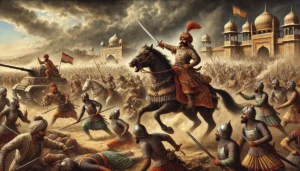The Sikh calendar, known as the Nanakshahi Calendar, is named after the founder of Sikhism, Guru Nanak Dev Ji. Its foundation lies in “Barah Mah,” a poem that reflects the changing seasons.
This tropical solar calendar aligns closely with the Gregorian calendar in terms of its structure and length. The year begins with the month of Chet and comprises 365 days, 5 hours, 48 minutes, and 45 seconds. It follows a pattern of five 31-day months and seven 30-day months. Leap years occur every four years, with the month of Phagun having an extra day.
The Nanakshahi Calendar was officially adopted in 2003 by the Chief Khalsa Diwan. Its first year corresponds to 1469 AD. For instance, Diwali in 2019 fell on October 27th, 2019, which is equivalent to 13th Katak, 551 in the Nanakshahi Calendar.
Nanakshahi Months
| S.No | Month | ਮਹੀਨਾ | Duration |
| 1 | Chet | ਚੇਤ | March-April |
| 2 | Vaisakh | ਵੈਸਾਖ | April-May |
| 3 | Jeth | ਜੇਠ | May-June |
| 4 | Harh | ਹਾੜ | June-July |
| 5 | Sawan | ਸਾਵਣ | July-August |
| 6 | Bhadon | ਭਾਦੋਂ | August-September |
| 7 | Assu | ਅੱਸੂ | September-October |
| 8 | Katak | ਕੱਤਕ | October-November |
| 9 | Maghar | ਮੱਘਰ | November-December |
| 10 | Poh | ਪੋਹ | December-January |
| 11 | Magh | ਮਾਘ | January-February |
| 12 | Phagun | ਫੱਗਣ | February-March |


 Buddhism History, Origin, Sect, Councils...
Buddhism History, Origin, Sect, Councils...
 Rana Sanga: The Fearless Rajput King and...
Rana Sanga: The Fearless Rajput King and...
 Vikramshila University Revival, Location...
Vikramshila University Revival, Location...













